Sizing Equipment Grounding Conductors (EGC) Table 250.122: What’s New in the 2020 NEC?
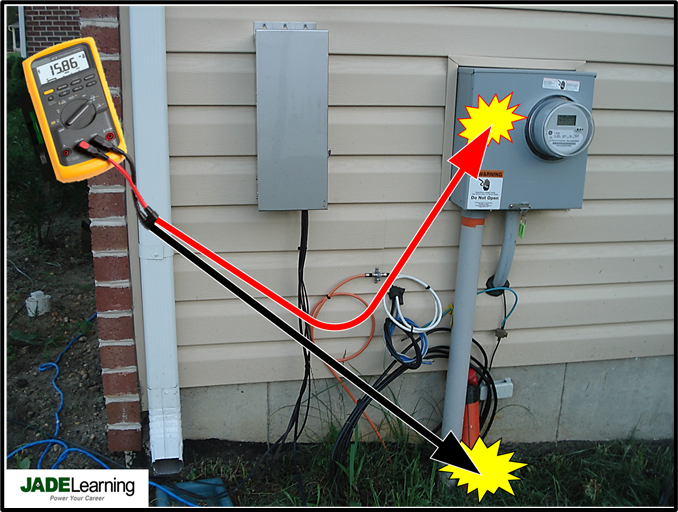
By: Jerry Durham | Mar 02, 2021
If you turn to Section 250.122 in the 2020 NEC, you find information that has been helping electricians to size equipment grounding conductors (EGC) for longer than most electricians have been pulling wire. If you were on the job prior to 1996, you would have happened on this information in “250-95” in your Codebook, instead of 250.122. The information has leaped ahead a bit in the Codebook since then, but its purpose remains unchanged.
During that same Code cycle, you also would have found that ungrounded branch circuit conductors protected by an overcurrent device with a rating of 6000-amps required no less than a 1200 kcmil aluminum equipment grounding conductor, assuming you were using an aluminum equipment grounding conductor.
That requirement remained unchanged in the NEC for better than 50 years. But as the saying goes… “All good things must come to an end.”
Changes in the 2020 NEC
The NEC has undergone a number of changes for the 2020 Code cycle, and that includes Article 250 Grounding and Bonding. We are going to look at three of these changes today, paying special attention to Equipment Grounding Conductors (EGC). But let’s first look at what constitutes an equipment grounding conductor (EGC) and how it differs from the oft-misunderstood grounding electrode conductor (GEC) that connects noncurrent-carrying metal parts of the electrical service to the electrode buried in the earth
EGCs VS. GECs
Equipment Grounding Conductor (EGC): Table 250.122
The EGC of a branch circuit bonds the noncurrent-carrying metal parts of a connected load back to the grounded metal parts of the electrical distribution panel where the circuit originates. This EGC can be a wire-type or it can be in another form such as an approved metal conduit. Regardless of the type, the job of the EGC is to carry electrical fault-current back to the distribution panel (source) any time a short-to-ground event occurs. This low-impedance path for fault-current to flow back to its source allows a circuit breaker or fuse to trip in the event of a short circuit.
Equipment Grounding Conductor in a 14/2 NM Cable

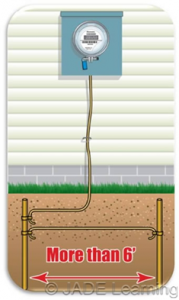 Grounding Electrode Conductor (GEC): Table 250.66
Grounding Electrode Conductor (GEC): Table 250.66
The GEC does not serve the same purpose as the equipment grounding conductor. Instead, it connects the noncurrent-carrying metal parts of an electrical service, such as a panel enclosure or meter base enclosure, directly to the the earth below through a driven ground rod or similar buried electrode. This connection does NOT provide a reliable path for fault-current to flow should a short-to-ground event occur. Remember, all current in an electrical circuit, whether intentional or the result of a fault, is trying to get back to its source using the path of least resistance. The earth offers too much resistance to current flow for fault-current to flow at sufficient speeds to trip an overcurrent device. Therefore, it will not force a circuit breaker or fuse to trip during a short-to-ground event. It is the Main Bonding Jumper (MBJ) connecting the metal electrical enclosures and equipment grounds to the service neutral inside the service equipment that allows current to flow fast enough to trip an overcurrent device during a short-to-ground occurrence.
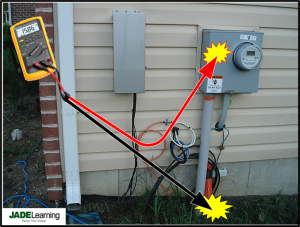
The GEC that establishes a connection between noncurrent-carrying metal parts of the service and the earth below also provides an equipotential bonding plane between the two surfaces. This equipotential bonding plane reduces the likelihood of a voltage gradient (difference) existing between the two surfaces and therefore reduces the risk of electric shock if someone touches both an electrical service enclosure and the earth simultaneously. There shouldn’t be voltage on these surfaces, but if it happens, equal voltage between the two surfaces will discourage electric shock.
The connection to earth offered by the GEC also redirects lightning strikes away from utility-owned transformers and toward the earth where they can do the least damage.
The GEC is sized according to the largest ungrounded (hot) service conductors that feed the service, per NEC Table 250.66.
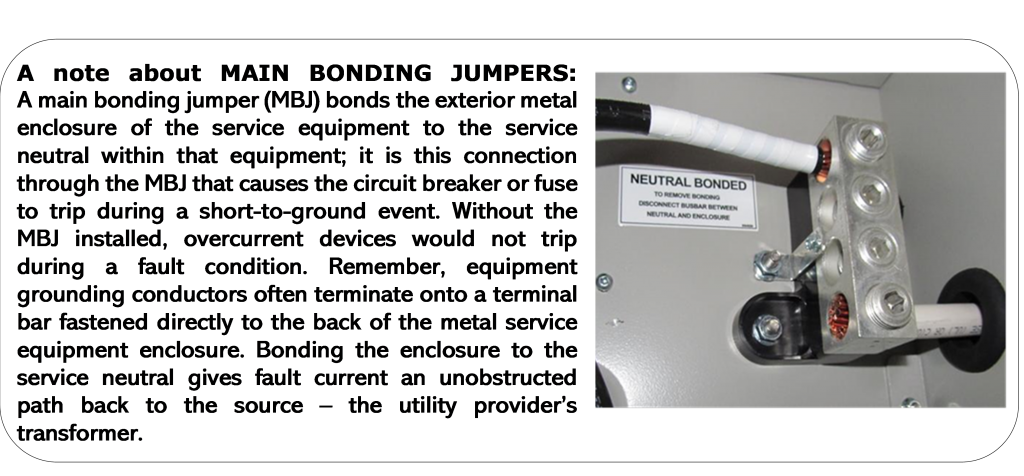
Three Big Changes for Sizing EGCs in the 2020 NEC
Now that we understand the roles of both the EGC and the GEC in the electrical system, let us look at significant changes that apply to Equipment Grounding Conductors (EGC) in this new 2020 Code cycle!
Section 250.122(B) in the 2020 NEC
Section 250.122(B) from the 2017 NEC told us whenever ungrounded (hot) circuit conductors are increased in size due to:
- Four or more current-carrying conductors in a single conduit
- Ambient temperatures above 86 degrees Fahrenheit
- Voltage drop due to excessive conductor length
Then the Equipment Grounding Conductor (EGC) in that circuit must also be proportionally increased based on the circular mils increase applied to the ungrounded (hot) conductors. However, in the 2020 NEC, 250.122(B) states this mandatory size increase for the EGC is required ONLY for reasons other than the following:
- Ambient temperature increase (addressed in 310.15(B)
- Four or more current-carrying conductors in a single raceway (addressed in 310.15(C)
In other words, the revised requirement in the 2020 NEC states we no longer need to increase the size of the EGC when increasing the size of phase conductors for things like extreme ambient temperatures or too many conductors in a single conduit. That leaves us with only one remaining condition (under normal circumstances) for increasing a circuit’s Equipment Grounding Conductor (EGC); Voltage Drop. And this is logical because if the electrician determines that circuit conductors are so long that they will lose sufficient voltage to power the connected load, then the EGC in that circuit may be too long as well and may offer too much resistance to current flow should a short-to-ground event occur. In this case, the overcurrent device protecting that circuit would not trip.
Section 250.122(B) Exception in the 2020 NEC
The second major change for sizing Equipment Grounding Conductors (EGC) in this new 2020 Code cycle is found in Section 250.122(B) Exception. It includes a new method available for increasing the EGC size, should the increase in size be required. The previous rule stated whenever an increase to the EGC was required, that increase had to be based on (and proportional to) the increase in circular mils applied to the ungrounded (hot) conductors. In the 2020 NEC, the increase can be determined by a qualified person, instead of being based solely on the circular mil increase applied to the ungrounded (hot) conductors. This is certainly new for the NEC. The NEC leaves it up to the Authority Having Jurisdiction (AHJ) to determine who constitutes a “qualified person.”
Whoever is awarded this task, the intent of the Code change in 2020 is that a qualified person will not be bound by the previous requirements in the NEC for increasing the size of a circuit’s Equipment Grounding Conductor (EGC). However, they will be responsible for whatever method they employ should they steer away from the NEC prescribed procedure.
Table 250.122 in the 2020 NEC
Finally, the third major change for this new Code cycle applies to larger circuits, specifically those protected by 5000- and 6000-amp overcurrent devices. These are not typical power and lighting circuits to be sure, but should they come up, we must know that Table 250.122 has been revised so that a 1200 kcmil aluminum or copper-clad aluminum EGC will not be sufficient to serve a 5000- or 6000-amp circuit. The Table now requires a 1250 kcmil conductor for this application.
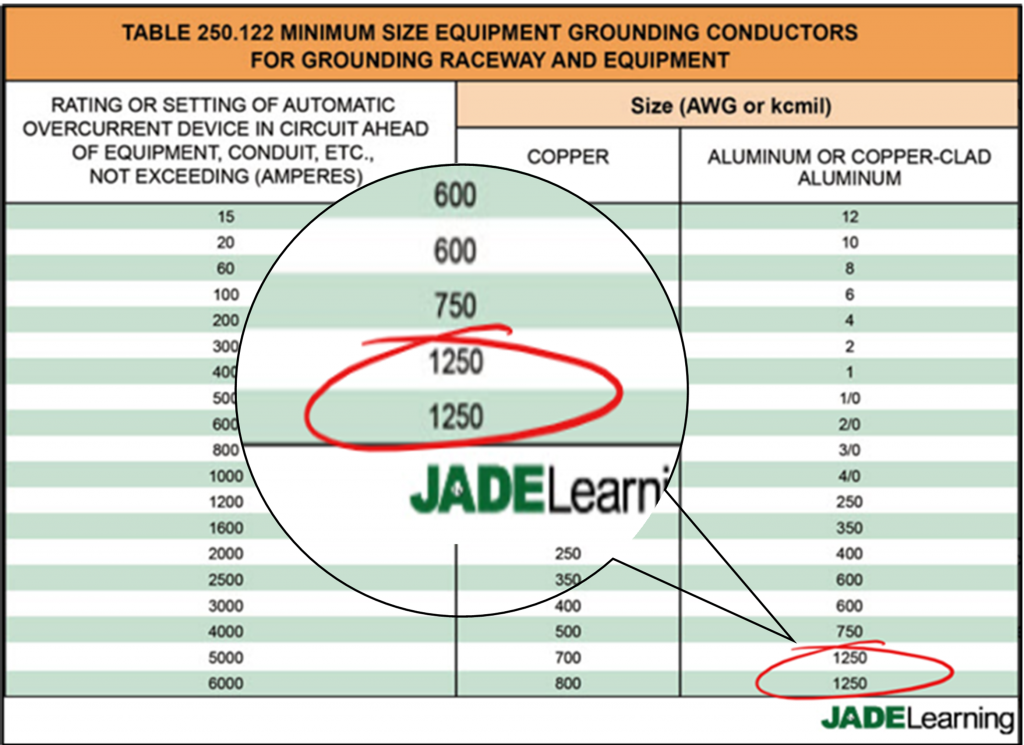
Table 250.122 Minimum Size Equipment Grounding Conductors
There are additional minor revisions that can be found in Section 250.122 for this 2020 Code cycle, but these changes are more organizational in nature. An example would be 250.122(F)(1)(a) that has been broken down into additional subsections to further chunk the material for more palatable reading – but these changes do not alter the intent of the Code.
If you are interested in learning more about grounding requirements in the 2020 NEC, sign up for our course on System Grounding and Bonding or Equipment Grounding and Bonding.


